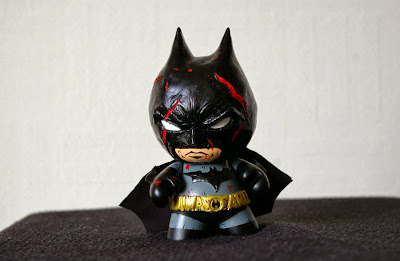PHOTO REFERENCE FOR ITALIAN SUNLIGHT
...which he later used as reference for this painting:
Fuchs squeezed colors into the painting that were nowhere in the original photograph:
The photo preserved important information, yet the special quality that Fuchs saw in the Italian light, and the hidden forms it revealed, did not come from a camera. They only emerged after Fuchs digested the photographic information and began his painting.
Fuchs was trained in traditional drawing and painting skills, without photographs. However, when he worked in a Detroit commercial art studio in the 1950s, he was visited by an illustrator from the famed Cooper Studios in New York who urged him to make more use of photography. The illustrator explained that all the top illustrators in New York were now relying on photo reference to satisfy modern client demands. He told Fuchs: "It makes no sense to paint the way you are doing it. You'll never be able to keep up with the competition." From that point on, Fuchs used his camera as a reference tool, especially in situations where he had no time to sketch or paint details:
 |
| Fuchs photographing President Kennedy in the oval office |
 |
| Fuchs photographing the action at a sports events for Sports Illustrated |
Note how Fuchs subsequently pushed those Italian shadows even further. He uses them as a vehicle for meditations on color, value and design.
The old man hobbling off into the distance is Fuchs' invention.
ARTISTS AT WAR, part 4
L. J. Jordaan (1885-1980) was a powerful graphic artist and political cartoonist in Amsterdam for the magazine, Green. He drew a biting series of anti-Nazi cartoons during the 1930s. After the Nazis invaded the Netherlands, they promptly shut down his magazine but Jordaan continued working underground and for alternative publications.

 |
| Dictating to the newspapers (wearing handcuffs) about what they can print. |
 |
| Stealing into the Netherlands by the back door... |
As the tide turned against the Nazis later in the war, Jordaan gleefully recorded their misfortunes:
In the end, Germany lay in ruins and Green published the following illustration of "the hangover of Brunhilde," the German valkyrie who had become drunk on Nazi lies. The collar on the cat in the window says "retribution. "
 | ||
| Note the graves on the hill. |
In addition to his job as a political cartoonist, Jordaan was a journalist and a musician. After the war he changed careers and became a well known film critic.
I think his images, drawn in the face of political opposition, were strong and evocative. His work deserves a broader audience than it has had.
SIMPLER IS BETTER
No clothes.
No photo reference
No fingernails or eyelashes.
No light source.
No facial expressions
No laws of anatomy that can't be compromised in the name of design.
No place to hide.
Rodin's watercolors: Absolutely marvelous.
DEADPOOL Graffiti
Subscribe to:
Comments
(
Atom
)
























































